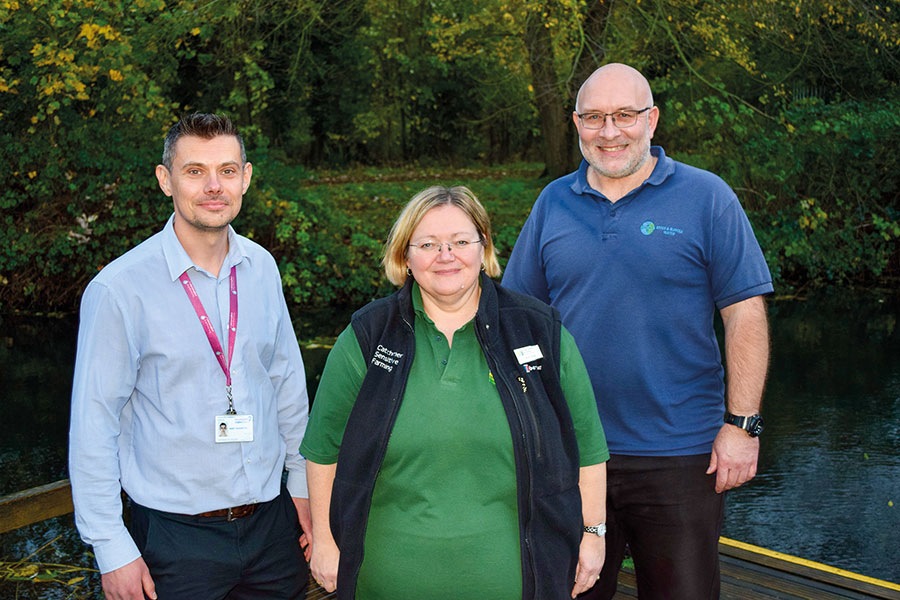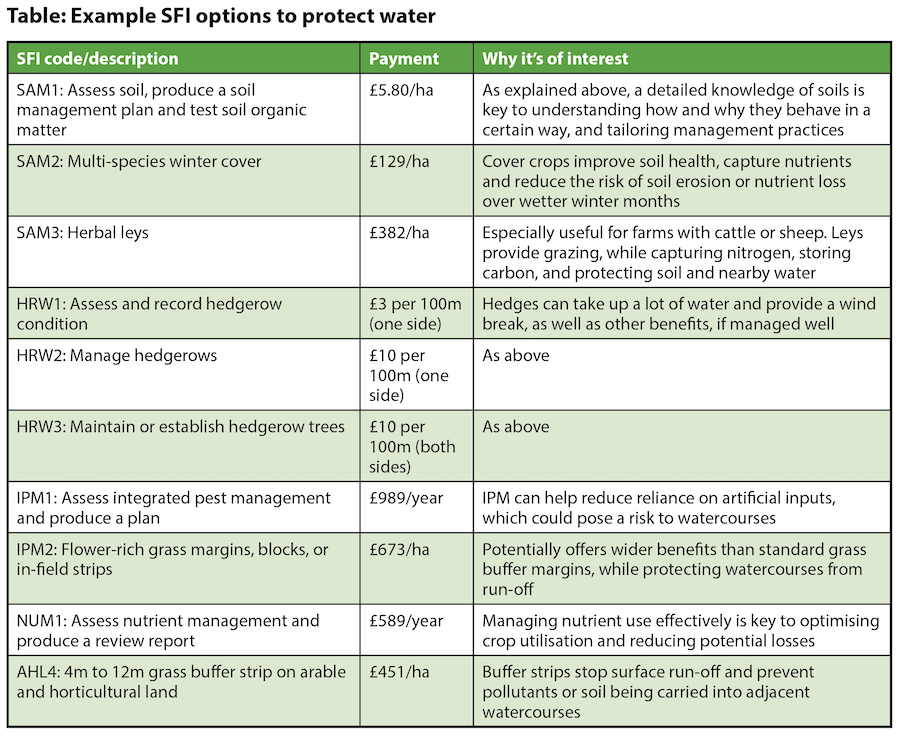Improve soils to manage extreme weather risks
4th March 2024
More needs to be done to improve the resilience of soils in the face of increasingly extreme weather patterns, according to speakers at a recent water quality event for farmers in East Anglia.

The 15th annual Agriculture & Water workshop, jointly organised by agronomy firm Farmacy and sponsor Essex & Suffolk Water, set out a generally positive picture for water quality in the region – especially in relation to pesticides.
However, heavy rainfall events over the past two autumns clearly highlighted the challenges that were still to overcome, notably around soil and nutrient losses from farmland.
Regular raw water monitoring in local rivers showed nitrate concentrations in some areas hit the highest for more than 20 years last autumn, when rain arrived after what had been a very dry 2022 season. The exceptionally wet October in 2023 caused a similar, albeit less severe, spike in raw water nitrate concentrations and turbidity (cloudiness caused by soil particles), presenting issues for water companies abstracting water for treatment, and for farmers through the loss of valuable nutrients, speakers said.
“It’s not that anybody did anything wrong, it just shows what we – water companies and farmers – have got to deal with as weather patterns become more extreme,” said Anglian Water’s Gary Hodgetts.
“When nitrate levels or turbidity are too high in raw water supplies (above 50mg/litre for nitrate), that means we have to turn off abstraction pumps – so what happens upstream can have big implications elsewhere.”
Essex & Suffolk Water’s Stephen Derbyshire agreed that nitrate concentrations and turbidity of raw water supplies did often show a clear increase after heavy rainfall, although 2022 was more severe because the season had been so dry, meaning less nitrogen was taken up by plants and more was in the soil waiting to be washed out when heavy rain arrived.
Improving the ability of soils to cope with such weather extremes was key to mitigating future water quality risks; but doing so also benefited crop productivity, he said.
Support available
Mr Derbyshire said there was a range of support available to help farmers improve soil management and reduce water quality risks, either via water companies, or through the latest Sustainable Farming Incentive (SFI) options (see table for examples).
Essex & Suffolk Water, for instance, was again offering its ‘Field to Tap’ scheme to farmers in three river catchments (River Stour, Layer Brook and Roman River). It included capital grants towards various measures that would benefit water quality, such as installing a bunded and/or covered sprayer filling area, rainwater harvesting, biobeds, buffer strips, and detailed ‘Gold’ soil health assessments – carried out by Farmacy.
Essex & Suffolk Water is also involved with a trial to investigate the effectiveness of overwinter cover crops for taking up soil nitrogen and reducing the risk of nitrate entering watercourses.

Mr Hodgetts said Anglian Water had this year offered farmers a subsidy of up to £250 towards the cost of cover crop seed ordered via one specialist supplier. The company was also offering grants of up to 50%, or a maximum of £500 per holding, towards any staff training focused on the protection or improvement of raw water quality.
Other tailored support was targeted at farmer cluster groups in priority areas, and further assistance for flood alleviation and water quality improvements would be available through the Landscape Enterprise Networks (LENs) from mid-December.
“There’s lots of local support available, so it’s well worth seeing what’s in your area,” said Farmacy agronomist Jim Woodward. “The farming industry has made great improvements to address agrochemicals in raw water, so now the focus is on what we can do to reduce the risks from nitrates and soil.”
Building soil resilience
Farmacy soil specialist Jade Prince highlighted three important areas to focus on in relation to soil health and raw water quality.
First was to improve the movement and retention of water in soils. “Some parts of the South East recorded 225% of their average rainfall this October, with a lot of water falling in just a few days. Many fields just couldn’t take in water quickly enough, or hold onto it.
“October 2023 was exceptional, but such events are becoming more common. By 2050 it’s predicted there’ll be 15–30% more rain in winter and 15% less in summer, so we need to build the resilience of soils to hold onto water when there’s an excess and save it for when there’s a deficit.”
Texture played a big role in the ability of soils to hold and store water, she added. High clay content, for example, was good at holding water, but the small pore spaces often meant slow infiltration and greater chance of surface pooling and runoff. Equally, while the larger pore space of sandy soils allowed water to infiltrate quickly, they were less able to hold water, and therefore more at risk of leaching, she said.
“You need a mix of large and small pore spaces to increase the time before soils reach saturation point. Increasing organic matter in humus form is the most effective way of improving structure and water holding capacity. Roughly, a 1% increase in organic matter, raises the water holding capacity by 225,000-litres/ha.”
Compaction and surface capping could contribute to poor infiltration and runoff, so she urged growers to check fields to identify any problems.
The other two important areas to consider were the ability of soils to retain, cycle, and make available, the key nutrients phosphorus and nitrogen, she said.
“Knowing what’s in the soil lets us put the correct management practices in place to allow soils to cycle nutrients more efficiently, improve plant utilisation, and reduce the reliance on artificial inputs. We want to keep nutrition in the fields, rather than it going into watercourses.”
Soil chemistry has a big influence on the structure of soils, nutrient availability and cycling, so she recommended growers undertake a thorough soil assessment, such as the Healthy Soils Gold test, which provided a full examination of the soil’s chemical, biological and physical properties to understand how and why it performed in a certain way.
SFI support for water quality
The revised SFI scheme included a number of different options that could help farmers tackle soil and water quality risks, Catchment Sensitive Farming (CSF) farm adviser for Essex, Mandi Savage said.
Ms Savage outlined a few examples (again, see table), but insisted growers should consider everything available and select those that were most suitable to their situation.
“The SFI 2023 is very different to schemes of the past, so take time to go through the options, planning what you want and where it will go,” added Farmacy’s head of environmental services, Georgina Wallis. “Fit the scheme around the farm, starting with simple measures first – many of which you may be doing already – then building it up gradually.”
